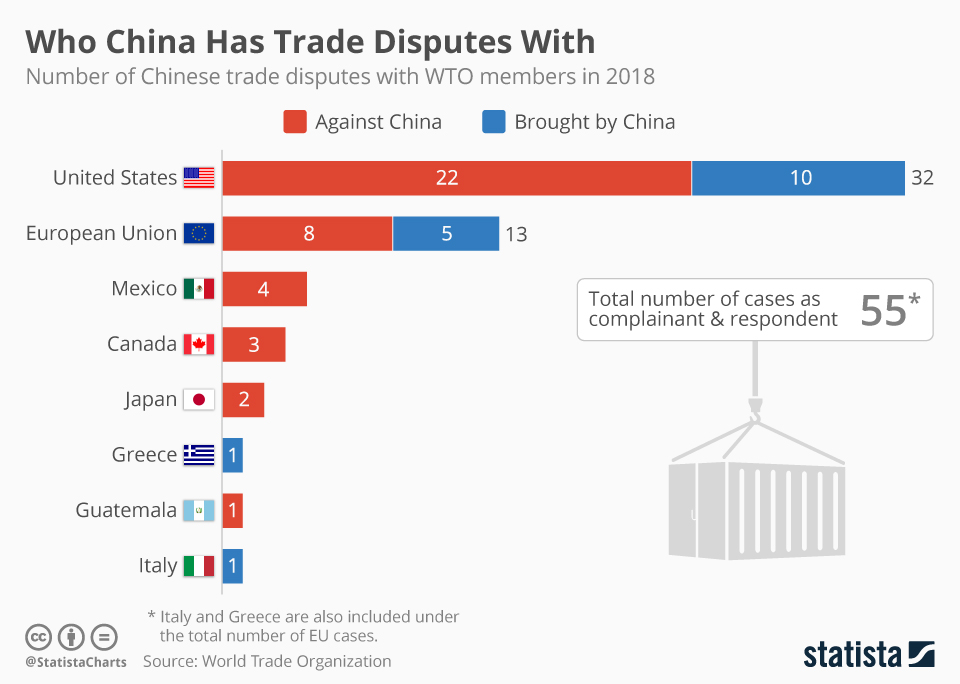China And US Trade Relations: A Race Against The Clock

Table of Contents
- Historical Context of China and US Trade Relations
- Key Issues Driving the Trade Dispute
- Trade Imbalances
- Intellectual Property Rights (IPR) Protection
- Technology Transfer and National Security Concerns
- Potential Pathways to Resolution
- Negotiation and Diplomacy
- Diversification of Supply Chains
- Regulatory Reform and Market Access
- Conclusion
Historical Context of China and US Trade Relations
The evolution of China and US trade relations is a complex tapestry woven with threads of cooperation and conflict. Early periods saw burgeoning trade, fueled by China's entry into the World Trade Organization (WTO) in 2001. This period witnessed rapid growth in bilateral trade, with China becoming a crucial manufacturing hub for global markets, including the US. However, this growth also brought about significant trade imbalances and rising tensions.
- Early periods of cooperation and rapid growth in bilateral trade: The initial engagement was marked by optimism and mutual economic benefit, particularly for US consumers who enjoyed access to cheaper goods.
- Rise of China as a global economic power and increasing trade imbalances: China's economic ascendancy led to a widening trade deficit for the US, sparking concerns about the fairness and sustainability of the trade relationship.
- The impact of intellectual property theft allegations and technology transfer disputes: Allegations of intellectual property theft and forced technology transfer became major points of contention, impacting US businesses and innovation.
- Escalation of tariffs and trade wars under the Trump administration: The Trump administration initiated a trade war, imposing tariffs on a wide range of Chinese goods, leading to retaliatory measures from China. This period saw significant disruptions to global supply chains.
- Ongoing negotiations and attempts at de-escalation: Despite periods of heightened tension, negotiations and attempts at de-escalation continue, highlighting the importance both nations place on maintaining some level of trade engagement.
Key Issues Driving the Trade Dispute
Several key issues have fueled the ongoing trade dispute between China and the US. Understanding these issues is crucial for navigating this complex relationship.
Trade Imbalances
The significant US trade deficit with China is a major point of contention.
- Statistics illustrating the scale of the trade imbalance: The deficit has consistently been in the hundreds of billions of dollars annually, representing a substantial flow of wealth from the US to China.
- Analysis of the factors contributing to the imbalance: Factors contributing to this imbalance include lower manufacturing costs in China, differences in consumer demand, and structural issues within both economies.
- The economic consequences of a large trade deficit for both countries: A large trade deficit can lead to job losses in the US, while for China, over-reliance on exports can create vulnerabilities in its economy.
Intellectual Property Rights (IPR) Protection
Concerns about intellectual property theft and weak enforcement in China remain a significant barrier to a smoother trade relationship.
- Examples of alleged IPR violations: Numerous instances of alleged counterfeiting, piracy, and forced technology transfer have been reported, impacting US companies across various sectors.
- The impact of IPR theft on US businesses and innovation: IPR theft undermines innovation, reduces competitiveness, and diminishes returns on investment for US businesses.
- Strategies for improving IPR protection in China: Strengthening IPR enforcement in China requires improved legal frameworks, increased penalties for violators, and greater cooperation between both countries.
Technology Transfer and National Security Concerns
The forced transfer of technology and national security implications have become increasingly prominent concerns.
- Examples of alleged forced technology transfer practices: US companies operating in China have alleged pressure to share sensitive technologies as a condition for market access.
- The role of technology in the broader geopolitical competition between the US and China: Technology is a crucial element in the ongoing geopolitical competition, with both countries vying for technological leadership.
- The impact on US technological leadership and national security: Concerns exist that the transfer of sensitive technologies could compromise US technological advantages and national security interests.
Potential Pathways to Resolution
Resolving the China-US trade dispute requires a multi-pronged approach encompassing negotiation, supply chain diversification, and regulatory reforms.
Negotiation and Diplomacy
Ongoing negotiations and diplomatic efforts remain critical to resolving trade disputes.
- Examples of past and present negotiation attempts: Various rounds of talks have occurred, with varying degrees of success, highlighting the complexities of reaching a mutually agreeable outcome.
- Challenges in achieving a mutually acceptable agreement: Differing political and economic priorities, coupled with mistrust, have hampered progress in reaching a comprehensive agreement.
- The role of international organizations in mediating disputes: International organizations like the WTO can play a significant role in mediating disputes and establishing a framework for fair trade practices.
Diversification of Supply Chains
Reducing reliance on China for certain goods and services is a key strategy for mitigating risks.
- Reshoring and nearshoring manufacturing operations: Companies are exploring options to bring manufacturing back to the US or relocate production to other countries closer to home.
- Exploring alternative trading partners: Diversifying supply chains involves identifying and developing relationships with other trading partners in regions like Southeast Asia and India.
- The economic and geopolitical implications of supply chain diversification: This process carries economic implications in terms of cost and efficiency, as well as geopolitical implications regarding relationships with other nations.
Regulatory Reform and Market Access
Regulatory reforms in China and improved market access for US businesses are crucial for a more balanced relationship.
- Specific areas requiring regulatory reform in China: Areas needing reform include state-owned enterprises' role in the market, ensuring fair competition, and improving market access for foreign companies.
- Benefits of improved market access for both US and Chinese businesses: Improved market access would foster greater competition, innovation, and economic growth for both countries.
- The role of international standards and regulations: Adherence to international standards and regulations can create a more transparent and predictable trading environment.
Conclusion
The relationship between China and the US is a complex and dynamic one, and the current state of trade relations is characterized by significant challenges. Addressing trade imbalances, protecting intellectual property rights, and managing technology transfer concerns are crucial steps towards a more stable and beneficial future. While negotiation and diplomacy remain essential, strategies like supply chain diversification and regulatory reform offer pathways towards a more balanced and sustainable trading relationship. Ignoring this “race against the clock” risks further escalation and significant economic repercussions for both nations. Understanding the complexities of China and US trade relations is critical for navigating this challenging landscape and building a more robust and secure economic future. Proactive engagement and strategic planning are vital for businesses and policymakers seeking to succeed in this evolving global environment.

 Solve The Nyt Mini Crossword Sunday May 11 Hints And Answers
Solve The Nyt Mini Crossword Sunday May 11 Hints And Answers
 10 Rokiv Peremozhtsiv Yevrobachennya Yikhniy Shlyakh Pislya Konkursu
10 Rokiv Peremozhtsiv Yevrobachennya Yikhniy Shlyakh Pislya Konkursu
 Novo Ferrari 296 Speciale Motor Hibrido De 880 Cv E Desempenho Aprimorado
Novo Ferrari 296 Speciale Motor Hibrido De 880 Cv E Desempenho Aprimorado
 Analyse Snelle Marktdraai Europese Aandelen Een Blijvend Fenomeen
Analyse Snelle Marktdraai Europese Aandelen Een Blijvend Fenomeen
 Porsche 356 Pabrik Zuffenhausen Dan Warisan Jermannya
Porsche 356 Pabrik Zuffenhausen Dan Warisan Jermannya
